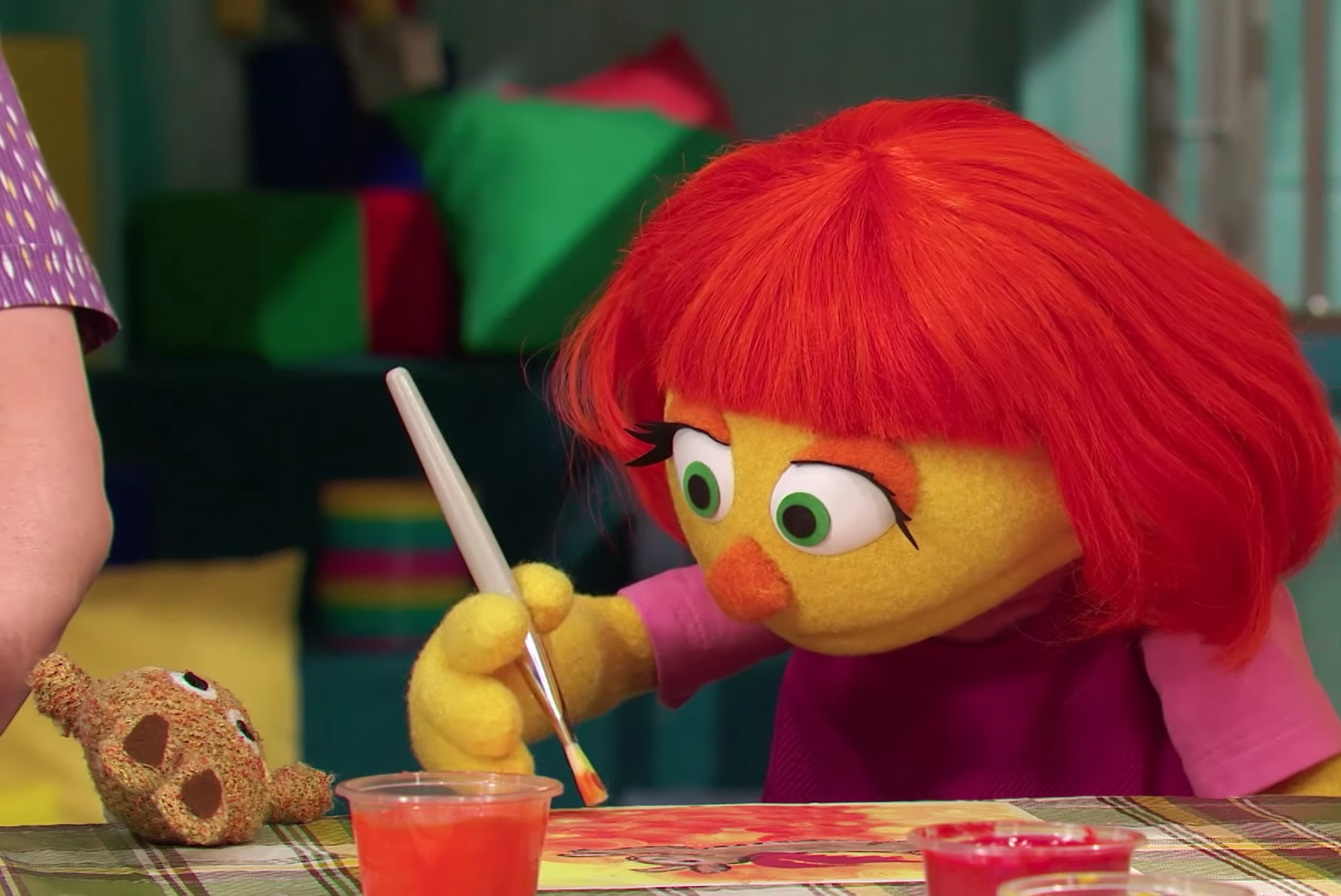When Sesame Street, the longest-running children’s television program in history, debuted their new character Monday, they didn’t just introduce a new playmate for Elmo and Big Bird. They started a powerful national conversation with a demographic primarily concerned with taking naps and learning the alphabet.
Julia — a character introduced in 2015 in Sesame Street books and digital content as a part of Sesame Workshop’s “See Amazing in All Children” autism awareness initiative — made the leap from pages and the web to the main show. She likes to paint and play, but as her new friends discover, not necessarily in the same way as the other inhabitants of Sesame Street.
It doesn’t mean she doesn’t like her new neighbors, as Big Bird first worries. She just “does things a little differently,” as fellow Muppet Abby Cadabby puts it. “In a ‘Julia’ sort of way.”
In its 47 years on television (mostly with PBS but now on HBO), Sesame Street has been not only a quintessential children’s show, but also a primary source of education for kids. Prior to, during and sometimes in place of a child’s preschool education, young children learn ABCs and 123s and the importance of sharing from the comfort of their own living room, all with the help of their favorite furry monsters.
The educational benefits of watching Sesame Street rival those of actually attending preschool, according to a 2015 study by Melissa Kearney from the University of Maryland and Phillip Levine of Wellesley College. Coupling fun songs and skits with lessons on reading, math, social skills and healthy eating habits positively and powerfully impact kids in the long run.
Sesame Street certainly isn’t the entertainment world’s first attempt at depicting a character with autism; throughout time and mediums, plenty of characters on various points of the autism spectrum have been featured in prominent stories, including Parenthood‘s Max Braverman, The Curious Incident of the Dog in the Night-Time‘s Christopher Boone and Hannibal‘s Will Graham, to name a few.
But Sesame Street takes things one step further with Julia. It’s not about fixing anybody or learning to overcome disability. It’s about learning about others’ differences and loving them not in spite of those differences, but because of them.
Furthermore, it depicts a young girl on the spectrum. Not only are girls with autism vastly underrepresented in entertainment, they’re much more likely than boys to go undiagnosed. Various studies compiled by the National Autistic Society found girls to be both diagnosed at much lower rates and later ages than boys.
This move will normalize autism for kids who might not otherwise be exposed to someone with it. It will also let kids with autism see someone like themselves positively represented on one of the most influential TV shows from the time they’re in diapers.
One-third of all American toddlers in the 1970’s watched the show. As The Washington Post’s Jim Tankersley put it, that amount of viewership is “Super Bowl-level”. If the show could reach and influence that many kids before the ubiquity of the internet, just think about how much of an impact it can have now.



